Memories of Handball at the Noriega Hotel
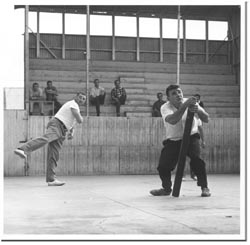
Handball player Jean Lorda; score keeper Jeannot Arrayet at the Noriega fronton
June 14, 2009
I’ll never forget that Sunday afternoon at the handball court at the Noriega Hotel in Bakersfield.
I was an impressionable teenager and had often heard my father speak of the exploits of legendary players such as Perkain, Gaskoina and Chiquito de Cambo.
Little did I know what awaited at the hotel’s trinqueta-style court. I was to be introduced to the personalities that made the game not only an exciting sport, but a virtual celebrity event in Bakersfield and across the Basque communities of the western United States.
READ MORE STORIES about NORIEGA’S
On this afternoon after church, with a satisfied stomach from a superb lunch prepared in Mrs. Elizalde’s kitchen in Noriega’s, we gathered in the wooden stands behind the court. An older man (old enough to be anyone’s grandfather) sat in anticipation of the games. Sporting an interesting western hat, he rolled his own cigarettes and carefully licked the paper with the steady coordination of hand and mouth. Judging by his tobacco-stained hands and leathery skin, he had been doing this for many years. After a friendly exchange with a fellow spectator, each pulled out some money, handed it to a third person, shook hands and made a wager on the outcome.
As people filled the bleachers, a woman with a personality as colorful as her wardrobe made her entrance. Wearing more jewelry than all the other women combined, this “grande dame” of the game announced in a velvety voice to her favorite player.
“Come on… Blue Boy!” she yelled out. I followed her gaze to see the image of a young dark-haired handball player with a blue cinta, or cloth belt. Beñat Arduain held his head high as he prepared for the match, bouncing the ball on the court with alternating hands. The name Blue Boy, coincidentally the name of a famous 18th century painting, was to be Benji’s name on the court. A quick look across the cross revealed his partner, also sporting a blue belt. His partner was altogether different though. He paced the handball court, hands on his hips, breathing deeply and rhythmically as he maintained a steely cold gaze at an imaginary point above the bleachers. He looked like Yul Brenner with an intensity of concentration like no one on the court. Like all great athletes, he was focused and seemed to be in a trance.
I soon learned by listening to my mother and father’s conversation that this was my father’s cousin, Sauveur Bidart. As the players squared off, I remember how emotions ran high on the court as well as in the stands. People yelled their approval and sometimes their disappointment after each point. The scorekeeper held a wooden palette as he announced the score in a semi-musical voice. With increasing anxiety, the oldest spectator rolled more and more cigarettes and smoked them until he could no longer hold them between his lips. The colorful woman, jewelry chiming in the wind, yelled with added enthusiasm, “OK Blue Boy!”
In the midst of all the hoopla, the most memorable actions that day were those of Sauveur’s. He celebrated points by keeping a stiff upper lip. During long exchanges with his opponents, he would pump his arm in excitement, like Tiger Woods. In stark comparison during a lost point or fault of his own, he would markedly show his disapproval.
This was the most entertaining of moments. Sauveur would vocalize his disappointment, discuss the point with himself or oftentimes give the audience an instant replay of how the point should have been played. On some occasions he would replay the point with his head. This was the sign of how deeply he wanted to win the game.
Physically he was not an ordinary athlete. He was not a large man by any means. This is what made him such a great player. He was the quickest handball player the Bakersfield crowd had seen and perhaps will ever see. Playing a clever game, his opponents were careful not to allow him to control the game in the front court. If allowed the opportunity, Sauveur would make the competition run the court in pursuit of his finely placed pilota balls. Their best bet was to keep the ball away from Sauveur. But this was not an easy task since Blue Boy Benji was equally as adept playing the back court. The two played an awesome game. On the Noriega handball court, Sauveur displayed his all-around game and athletic style. And the crowd loved it.
People had been coming out to see the players for many decades at Noriega’s. Players that had previously graced the court with their presence were much larger players such as Pete Ermigarat, Frank Pedeflous, Jean Lorda, Pete Borda, Jean Errassarett and Jean Arrayet.
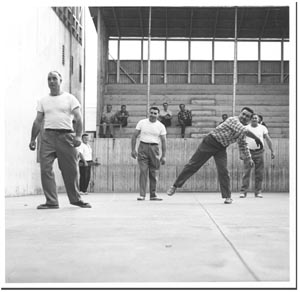
In 1972, the Kern County Basque Club decided to buy a property with a clubhouse and build a handball court. There was an enthusiasm for the game and a growing need to build a court that the club could call its own. In August 1974, the Union Avenue property was purchased. Rainbow Gardens as it was called, was acquired for $60,000. This property became the Kern County Basque Club.
Later the dream of our own handball court would become a reality. Many great handball players and supporters of the sport were active during this time; Amedée Irey and Joxe Recondo as well as John (Pampi) Urrutia, Marcel Membrede, Henri Duhart and of course, Bernard Arduain, today the owner of Benji’s restaurant in Bakersfield, and Sauveur Bidart to name a few.
With the talk of a new mur à gauche (left-wall court) came an increase in club membership. New members rushed in to help the club with the creation of a handball court that to this day pays tribute to the popularity of the game. A large sum of money even in today’s dollars, $40,000, was gathered through loans, donations and IOUs to build the court.
The “Gure Amentsa” (our dream) court was completed in 1978 with the court’s inauguration shortly following in November of the same year. The picnic that year was celebrated at Sacred Heart Church in Greenfield just outside of Bakersfield and then festivities were moved to the club’s new court for a handball match between doubles teams Ganix Iriartborde and Frank Pedeflous against Agustin Artechea & Pete Etchegoinberry.
During the summer of 1978, a delegation of handball players traveled to France from Bakersfield to represent the Basque club to compete in the World Championships. Before the completion of the Gure Amentsa court, Sauveur Bidart traveled to the nearest trinqueta court in Los Angeles to prepare for the competitions. His efforts paid off since he was the only one to get a bronze medal.
Although my cousin Sauveur was only here a short time to enjoy it, I can still recall the excitement that playing on the new Gure Amentsa court gave him. Sauveur would say that the Basques of Bakersfield, young and old alike, would finally have a handball court they could call their own.
To read more about the Basques in Bakerfield, here are some links to books from Amazon:
The Basques of Kern County by Stephen Bass and George Ansolabehere (2012)
Travel Guide to Basque America by Nancy Zubiri (2006)
Basques to Bakersfield by Mary Grace Paquette (1982)

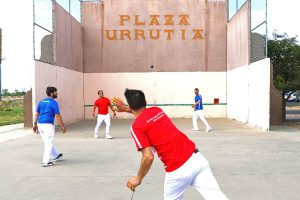
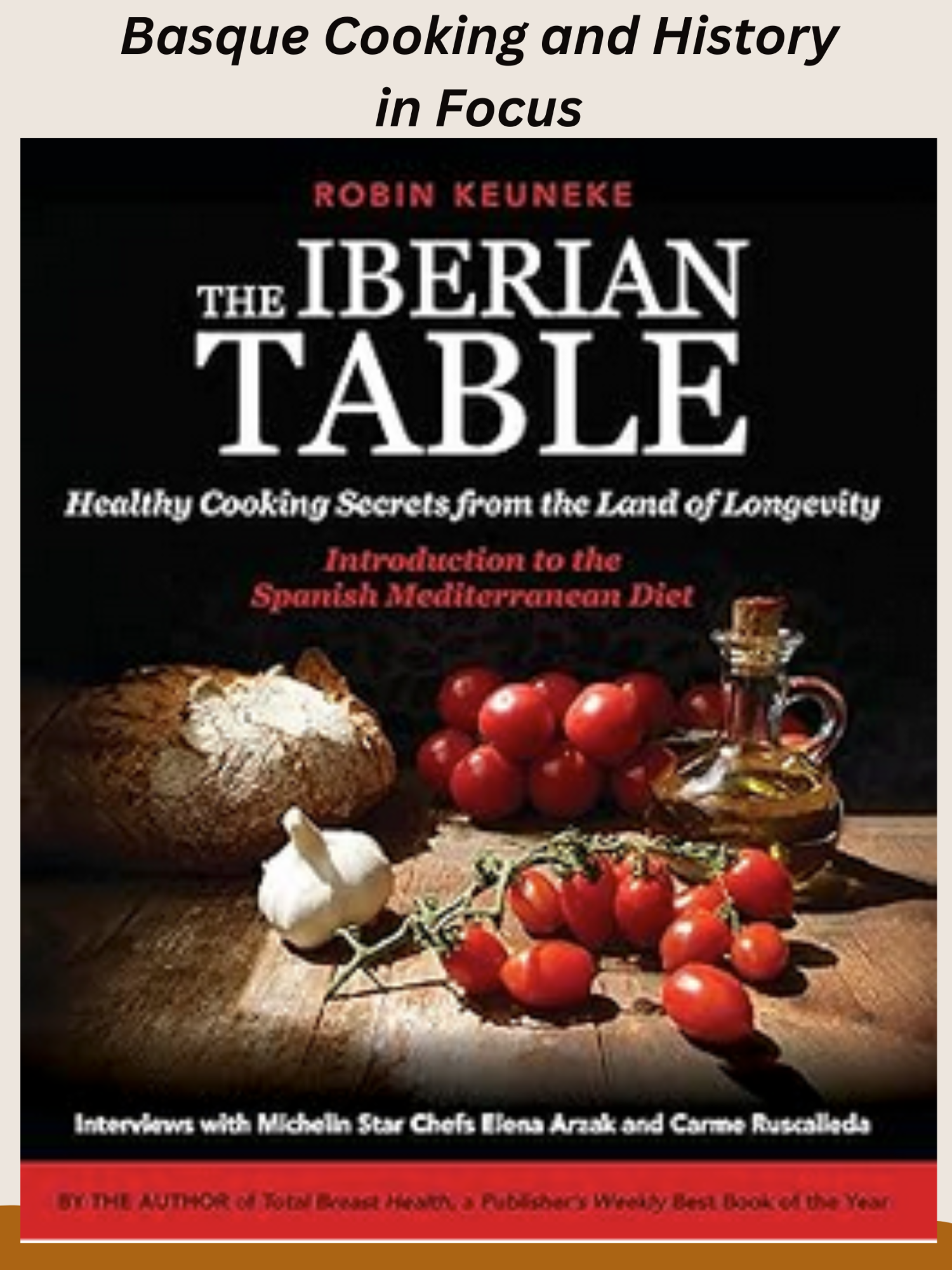
 Donate
Donate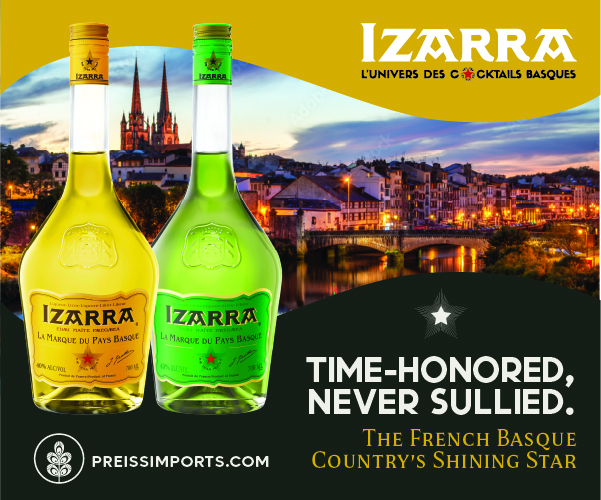
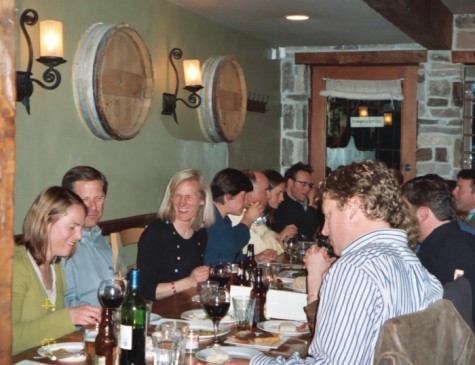
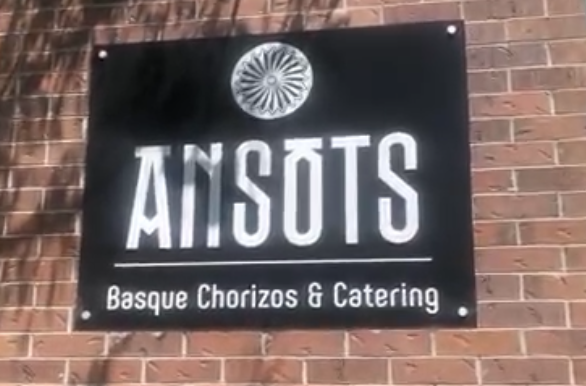
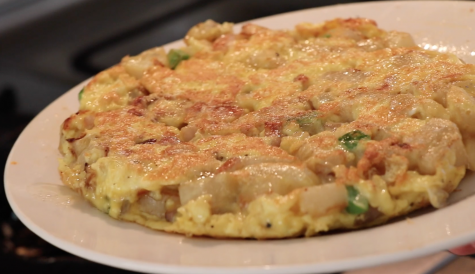
Xabier Berrueta • Jul 30, 2009 at 9:32 am
To know who we are now and where we are going….we must know our past. It is a phrase commonly used in NABO (North American Basque Organizations) projects. There is a great tradition of pilota/pelota in the United States dating back to the post California gold rush era on the west coast and a strong jai alai tradition on the east coast dating back to the 1920’s. In fact, baseball icon Babe Ruth gave it a shot at jai alai while visiting Cuba on a few occasions before Yankee management found out and squashed the dreams of the greatest american jai alai player that never was.
But I digress…..pilota was not exclusively a Basque Sport, we have merely been caretakers of the sport in a critical point of its history in much the same way as the Scots and the English imported soccer/football/futbol/calcio/jogobonito to the world of which neither nation has done anything significant since the 1966 World Cup.
It is important that Basques continue this tradition….but there is an even greater responsibility for us to export the sport and portray a postive image and perception of the sport.
As president of the United States Federation of Pelota, a federation in transition upwards, I constantly get emails and calls, mostly from members of the hispanic community, asking where the nearest courts are. The players are there….it is the courts we lack!!!
If we build them, they will come…..I am proud to say that the Town of Gardnerville is in the exploratory stage of developing a multi-use, multi-purpose publicly financed fronton. Funny how Obama was mentioned since it is through the Main Street America initiative/project that Gardnerville is considering. I know one other town near Sacramento and the City of Boise are exploring options….. don’t laugh…it is real…..”GURE AMETSA”….can be repeated anywhere….and thus Sauveur and many others “ametsak”/ dreams….can be reality.
We lack modern pilota heros??? how about Toni Huarte….born in San Francisco,….a product of UDALEKU/Music Camp and ikaspilota/pilota camp…can you say 2006 Bronze Medalist?? (1 point from beating Spain for the gold) how about 2007 World Cup Silver medalist???…and he is 25.
You can’t watch live professioanl pilota?? check your sources… go to http://www.eitb.com or http://www.livetvcenter.com and watch on ETB SAT or Canal Vasco.
A lot better than watching that product that David Stern and the NBA call basketball…I used to know what team basketball was/is…not any more…but I digress…..
Pilota is a world sport…evident in the fact that the best pilota player in Trinkete is a Cuban (Waltari) and the best pala corta/paleta cuero player is a non basque Argentinian (Pablo Fusto) …both making their professional careers in the Basque Country.
And so to Sauver, Albert, Amedee, Henri…..to Jacque Unhassobiscay and Frank Pedeflous…to the Thursday night “get a way from the wife night” crowd that played paleta cuero at the Basque Cultural Center in the 1980’s and 1990’s….and continue today (now Mondays and Wednesdays)…to the Ocafrain ladies (both in Bakersfield and SF) and Candida Ecvheverria and countless other ladies who still play today…
…eskerrik asko….mil esker…thank you…thanks for keeping the court lights on!!!! even in the darkest days!!!
Xabier Berrueta
Philippe Igoa • Jul 26, 2009 at 2:16 pm
First of all, Mr. A.G, Native Basque, whoever you are, the article on handball you are referring to is an older article (I’m sure you knew that) written in the early 90s .I don’t know about other Basque-populated cities, but I know that Bakersfield has not done a very good job in promoting or developing young talent in handball; that’s just the facts. After Albert Falxa moved back to the Basque Country, handball just kind of died on the vine so to speak. Udaleku does a wonderful job in promoting dancing and music culture but there is no equivalent when it comes to handball at least in Bakersfield, and I can only speak in terms of my hometown. So naturally, the only frame of reference Bakersfield has in terms of handball history is Sauveur Bidart, Jose Recondo, Amedee Irey, Bernard Arduain and others whose careers were largely built in the 70s. Your NBA analogy is not very good because the NBA is a global sport and you just can’t compare the two. Handball is a relatively obscure sport in comparison in terms of media coverage. The only handball that you might see on television is in France or Spain on Sunday afternoons and you have to live there to see it. Unfortunately ESPN doesn’t cover handball in the state although that would be pretty cool don’t you think A.G.? In writing this article I have to admit that Sauveur Bidart is my cousin but even if he wasn’t, there is still no player that entertained the crowds of Bakersfield like my cousin, who combined pure, raw athleticism with showmanship. It is also thanks to Sauveur, my dad Bernard Igoa, Amedee Irey, Bernard Arduain, Jose Recondo, Albert Falxa, & Henri Duhart and others, that we have a fronton at the Basque Club today! These “native born” Basques fought tooth and nail to have this handball court built despite the opposition of many second and third generation Basques who thought that it was a waste of money. Funny, sounds like Obama’s health care plan, with the Republicans opposing the president at every turn in a project that would benefit the entire country but I digress! I would hope that someone with the right knowledge and experience would pick up the reins and try to develop some young handball talent in Bakersfield. Pala just doesn’t do it for me. It would certainly make Sauveur proud not to mention Albert, Amedee, & Henri smiling proudly from up above!
Philippe Igoa
Native Basque - A.G • Jul 7, 2009 at 7:08 am
This work is really good, like others I have read on this website but it´s only a retrospective. We have a past but also a present I mean we are not a FOLK town. We developed with time (more than the spanish dogs).
If you speak about the NBA you remember Jordan, Bird, the players, teams or rules from the 50s, 60s,… but you remember also Kobe Bryant, Iverson, McGrady, the Lakers of Gasol, the new rules… Why can´t you do the same when you speak about the Basque Culture? Nowadays handball is one of the most popular sport like it was historically and I can´t understand why the article’s last references are from the 70s. Does anyone really think that we are still comunicating with the txalaparta and our favourite transport is the donkey?
Xabier Berrueta • Jun 16, 2009 at 7:29 am
Sauveur Bidart became the first pilotari, residing in the United States, to win a medal of any kind in an official International Pelota Competition; he competed in the Trinquete Singles Handball category and won the bronze medal at the 1978 World Championships held in Biarritz. Players from the United States, under the auspices of NABO (North American Basque Organizations), participated in this tournament, in which Sauveur was one of the players. By the 1982 World Championships, the United States Federation of Pelota had been created and so NABO players would compete for the United States. Thanks for the article!!!!
rjl • Jun 14, 2009 at 11:52 am
Great read on Bakersfield’s proud handball tradition. Thanks!